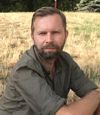Biodiversity around my corner hidden in history – archival and current data in nature-based observations
Discover the AMUNTCOLL IT – a database of specimens and observations of plants, animals, and fungi, with online tools for biodiversity analysis.
Discover the AMUNTCOLL IT – a database of specimens and observations of plants, animals, and fungi, with online tools for biodiversity analysis.
The aim of the course is to familiarise participants with the database of specimens and field observations of plants, animals and fungi from collections stored at the Faculty of Biology of the Adam Mickiewicz University. This database is a source of access to unique natural collections, where physical collections, previously available only at the Faculty of Biology of the Adam Mickiewicz University, have been scanned and made available in digital form. In addition, course participants will learn what tools to use for spatial or statistical analysis and how to use a mobile application for collecting data in the field, cooperating with the AMUNATCOLL IT system.
The course is intended for:
The basic level course consists of four thematic modules conducted in the "at your own pace" mode.
The course uses instruction in the form of a presentation, film and textbook.
Anyone can take the course, but basic computer skills are required.
Thanks to the course, you will:
In the module you will find general information about archival natural history collections, course structure, credit requirements and contact details of the course authors.
The module presents information about the Amunatcoll project and system.
In this module, you will explore the search tools available in the AMUNATCOLL IT system and learn how to create advanced searches based on various criteria, including spatial and logical filters.
In this module, you will learn how to use historical nature data to deepen your knowledge of biodiversity in the studied area. You will also discover the definition of biodiversity and its threats. Additionally, you will explore the issue of spatial accuracy in the location of specimen sites and species observations in our database.
In this module, you will get to know the AMUNATCOLL mobile app, which allows you to independently collect field observations or specimens and analyze them spatially and statistically on your AMUNATCOLL IT portal account. Additionally, you will learn how to add photos and voice notes to your own observations using the mobile app.
In this module you will find two parts: a final test with closed questions, with one correct answer, and a short summary of the course with a description of the new skills you have acquired during the course.
To pass the course, you must obtain at least 51% correct answers to all questions in the course and final test. The course contains a total of 8 control questions (modules 2 and 3). Each correct answer is worth 1 point, and you can try the exercises 2 times. Additionally, in module 2, you will find a discussion exercise, which is optional and not graded.
You will receive a certificate of course completion if you achieve at least 51% of the total points from the exercises and the final test. To claim it, click the "Finish course" button located in the final unit of the course. A screen will appear with information about your result and a certificate available for download.

Biological Spatial Information Laboratory
Faculty of Biology
Adam Mickiewicz University
Geographical Information System (GIS) Specialist at the Biological Spatial Information Laboratory, Faculty of Biology, Adam Mickiewicz University. The author has experience in geotagging techniques, mapping natural history collections, and creating databases.

Biological Spatial Information Laboratory
Faculty of Biology
Adam Mickiewicz University
Research and Teaching Staff member at the Department of Systematic and Environmental Botany, Faculty of Biology, Adam Mickiewicz University, Head of the Biological Spatial Information Laboratory, Faculty of Biology, Adam Mickiewicz University, and Associate Researcher at the Médiations Laboratory, Sorbonne University, Paris.

Biodiveristy Digitization Laboratory
Faculty of Biology
Adam Mickiewicz University
Specialist in the digitization of natural history collections at the Faculty of Biology, Adam Mickiewicz University. The author has experience in environmental monitoring of plants, geotagging techniques, and database creation and management.